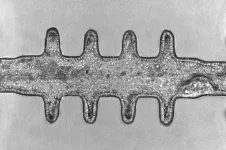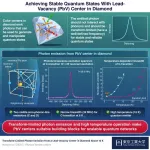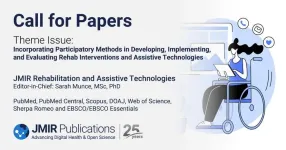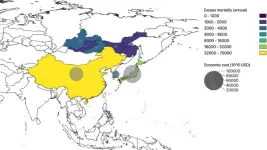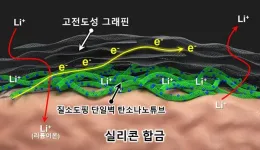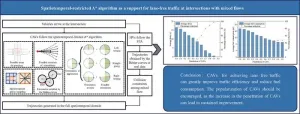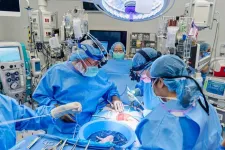(Press-News.org)
As our battle against cancer rages on, the quest for more sophisticated and realistic models to study tumor development has never been more critical. Until now, research has relied on animal models and simplified cell culture methods, which are valuable but cannot fully capture the complex interplay of factors involved in tumor development.
Even newer, more advanced models for studying cancer, such as organoids – tiny, lab-grown versions of organs – do not faithfully replicate the cell behaviors and tissue architectures seen in actual tumors.
This gap has significantly hindered our understanding of the intricate processes underlying cancer initiation, progression, and response to treatment, and calls for more sophisticated models to accurately mimic the disease's complexity.
In a significant leap forward for cancer modeling, scientists have combined microfabrication and tissue engineering techniques to develop miniature colon tissues that can simulate the complex process of tumorigenesis outside the body with high fidelity, giving rise to tumors that closely resemble those found in vivo.
The breakthrough, now published in Nature, was made by Luis Francisco Lorenzo Martín, Tania Hübscher and other members of the group of Matthias Lütolf at EPFL, with input from the group of Freddy Radtke (EPFL) and colleagues at Roche’s Institute of Human Biology.
The mini-colons are topobiologically complex, meaning that they not only replicate the physical structure of colon tissue, including its distinctive crypt-and-lumen architecture, but they also mimic the cellular diversity present in the actual colon tissue during healthy and diseased states.
Optogenetics: Turning cancer “on”
Another important feature of the mini-colons is that they can be induced to develop tumors “at will” and in targeted areas – a massive advantage for cancer research. The researchers were able to turn inducible oncogenic genes on using “optogenetics”. This cutting-edge technique uses light to control biological processes such as gene expression.
By integrating a blue-light-responsive system into the mini-colons, the researchers made them undergo controlled oncogenic mutations, which can reveal tumor evolution with unprecedented details. This optogenetic approach allowed the scientists to induce targeted changes in specific cell populations within the mini-colons, mimicking the localized onset of colorectal cancer in the body.
“In essence, we used light to trigger tumorigenesis by turning on oncogenic driver mutations in a spatiotemporally controlled manner in healthy bioengineered colon epithelial organoids,” says Matthias Lütolf, who is also the founding director of Roche's new Institute of Human Biology. “This basically allows you to watch tumor formation in real-time and do very detailed analyses of a process that’s very difficult to study in a mouse.”
The ability to trigger these genetic changes with light in the miniature colons not only allows more controlled and more precise activation of the oncogenes, but also provides a powerful tool to study the dynamic processes of tumor development and the cellular response to these mutations in real-time. This innovative use of optogenetics opens up new possibilities for dissecting the molecular and cellular mechanisms of cancer.
By manipulating genetic and environmental conditions, the researchers were also able to replicate and observe a range of tumor behaviors in the mini-colons, and even identified key factors influencing cancer progression – for example, the protein GPX2, which associated with stem cell characteristics and tumor growth.
This groundbreaking research offers a potent new tool for exploring the underlying mechanisms of colorectal cancer and testing potential therapies, particularly when applied to human patient-derived tissues. The mini-colons’ ability to mimic tumor dynamics can reduce our reliance on animal models, which can accelerate the discovery and development of effective treatments.
Other contributors
EPFL Swiss Institute for Experimental Cancer Research (ISREC)
Swiss Cancer Center Leman (SCCL)
Institute of Human Biology, Roche Innovation Center Basel
Reference
L. Francisco Lorenzo-Martín, Tania Hübscher, Amber D. Bowler, Nicolas Broguiere, Jakob Langer, Lucie Tillard, Mikhail Nikolaev, Freddy Radtke, Matthias P. Lutolf. Spatiotemporally resolved colorectal oncogenesis in mini-colons ex vivo. Nature 24 April 2024. DOI: 10.1038/s41586-024-07330-2
END
Much like how electric circuits use components to control electronic signals, quantum networks rely on special components and nodes to transfer quantum information between different points, forming the foundation for building quantum systems. In the case of quantum networks, color centers in diamond, which are defects intentionally added to a diamond crystal, are crucial for generating and maintaining stable quantum states over long distances.
When stimulated by external light, these color centers in diamond emit photons carrying information about their internal electronic states, especially the spin states. The interaction between the emitted photons and the ...
JMIR Publications invites submissions to a new theme issue titled “Incorporating Participatory Methods in Developing, Implementing, and Evaluating Rehab Interventions and Assistive Technologies” in its premier, open access journal JMIR Rehabilitation and Assistive Technologies (JRAT).
JRAT is a peer-reviewed journal indexed in PubMed and PubMed Central, SCOPUS, DOAJ, Web of Science, Sherpa Romeo, and EBSCO and EBSCO Essentials. This theme issue aims to showcase research that actively engages patients, caregivers, and other stakeholders (knowledge users) ...
SAN ANTONIO — April 24, 2024 — Southwest Research Institute’s Dr. Marc Janssens was named a “DiNenno Prize Laureate” for his role in the widespread adoption of the cone calorimeter, a fire-testing tool that accurately measures heat release and material flammability. The National Fire Protection Association® recognized the cone calorimeter with the 2024 Philip J. DiNenno Prize for its lasting impact on fire safety. Dr. Vytenis Babrauskas, a co-recipient of the prize, developed the cone ...
As wildfires in Siberia become more common, global climate modeling estimates significant impacts on climate, air quality, health, and economies in East Asia and across the northern hemisphere.
The global effects of increasing wildfires in Siberia have been modeled by researchers at Hokkaido University and colleagues at the University of Tokyo and Kyushu University. The results, published in the journal Earth’s Future, suggest significant and widespread effects on air quality, climate, health, and economics under the most extreme wildfire scenarios.
The authors performed global numerical simulation experiments to evaluate how the increased intensity of wildfires ...
A new study, led by the University of Oxford and MIT, has recovered a 3.7-billion-year-old record of Earth’s magnetic field, and found that it appears remarkably similar to the field surrounding Earth today. The findings have been published today in the Journal of Geophysical Research.
Without its magnetic field, life on Earth would not be possible since this shields us from harmful cosmic radiation and charged particles emitted by the Sun (the ‘solar wind’). But up to now, there has been no reliable date for when the modern magnetic field was first established.
In the new study, the researchers examined ...
Eric and Wendy Schmidt Announce 2024 Schmidt Science Fellows
32 exceptional early career researchers will tackle ambitious interdisciplinary science projects
The seventh cohort of the interdisciplinary program, an initiative of Schmidt Sciences, will advance research in areas ranging from healthcare and the environment to advanced materials and robotics
The 2024 Fellows, representing 17 nationalities from 26 nominating institutions across North America, Europe, and Asia, will also benefit from bespoke ...
Background and Aims
Hepatitis B virus (HBV) reactivation is commonly observed in individuals with chronic HBV infection undergoing antineoplastic drug therapy. Paclitaxel (PTX) treatment has been identified as a potential trigger for HBV reactivation. This study aimed to uncover the mechanisms of PTX-induced HBV reactivation in vitro and in vivo, which may inform new strategies for HBV antiviral treatment.
Methods
The impact of PTX on HBV replication was assessed through various methods including enzyme-linked immunosorbent assay, dual-luciferase reporter assay, quantitative ...
Dr. Han Joong Tark and student researcher Lee Do Geun at the Nano Hybrid Technology Research Center of Korea Electrotechnology Research Institute(KERI) have developed a new manufacturing technique for "silicon/nitrogen-doped carbon composite anode materials." These materials aim to enhance the capacity and stability of lithium-ion battery anodes.
Silicon, despite offering significantly higher energy density compared to graphite (a common anode material), suffers from a major drawback: it expands 3-4 times during charging and discharging, leading to performance degradation. To address this issue, researchers are blending ...
As urban areas continue to grow, the demand for innovative solutions to alleviate traffic congestion and improve transportation efficiency has never been more urgent. A recent breakthrough study presented by researchers from the Shanghai Artificial Intelligence Laboratory as well as international research team introduces a cutting-edge approach to managing traffic at urban intersections using the spatiotemporal-restricted A* algorithm. This advanced method promises to transform how traffic is handled by optimizing the flow of both connected automated vehicles (CAVs) and human-driven vehicles (HVs) ...
NEW YORK, NY, APRIL 24, 2024— Surgeons at NYU Langone Health performed the first-ever combined mechanical heart pump and gene-edited pig kidney transplant surgery in a 54-year-old woman with heart and kidney failure—a confluence of advances that showcase the possibility and hope of modern medicine.
Doctors performed this feat in two stages: first surgically implanting the heart pump days before embarking on the landmark transplant, which included a gene-edited pig kidney and the pig’s thymus gland to aid against rejection. Before the procedure, patient Lisa Pisano, a New Jersey ...
